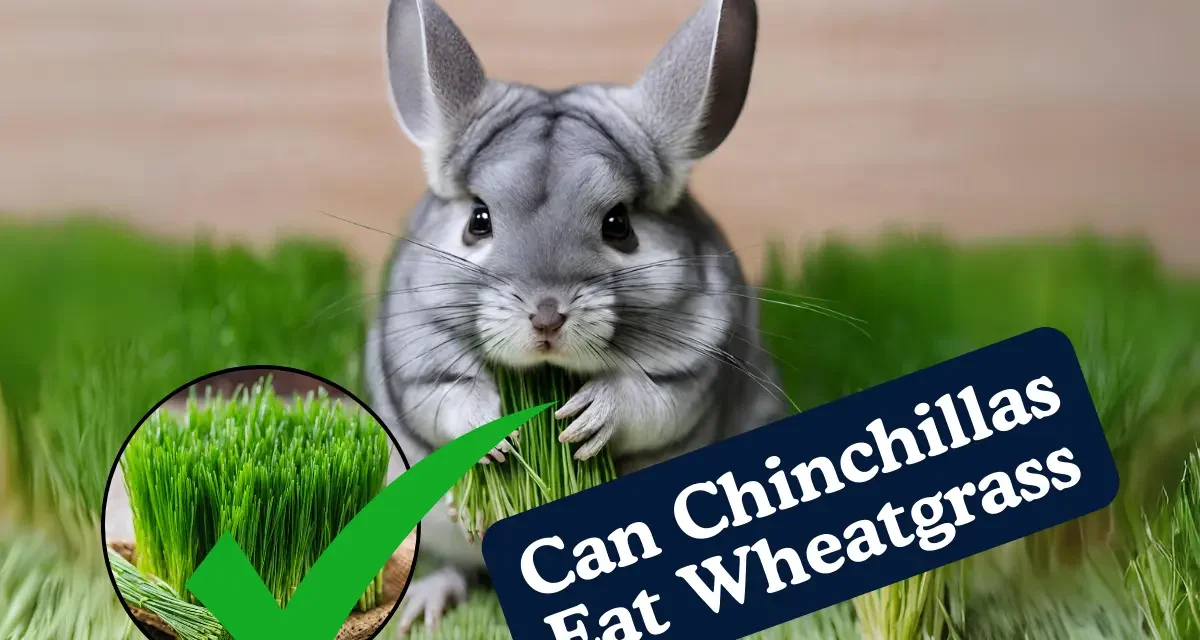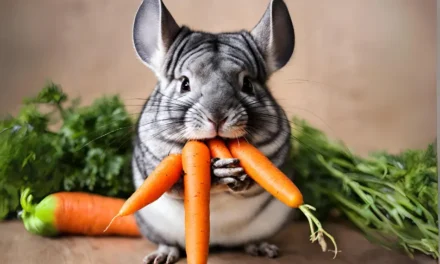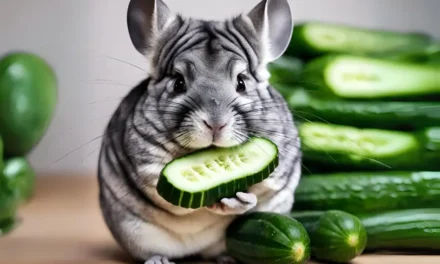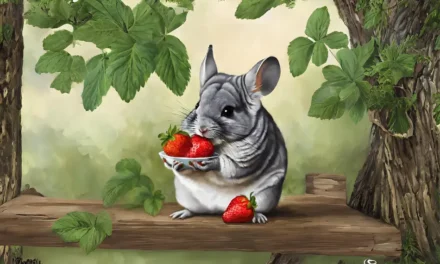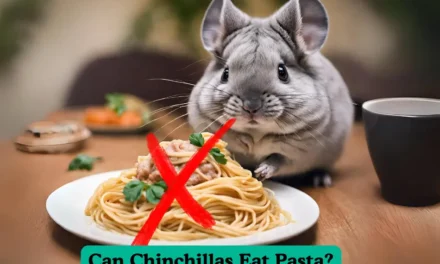Can chinchillas eat wheatgrass? This is a question that many new chinchilla owners ask themselves. After all, wheatgrass is often a healthy food for humans and other pets, so it seems logical that it would be good for chinchillas too.
Can Chinchillas Have Wheatgrass? A Comprehensive Guide
“Yes, chinchillas can eat fresh wheatgrass as an occasional treat. Wheatgrass is rich in nutrients such as vitamins, minerals, and fiber, which can support their overall health. It’s essential to offer wheatgrass in moderation, as excessive consumption can lead to digestive upset.”
How Many Nutritional Benefits of Wheatgrass for Chinchillas
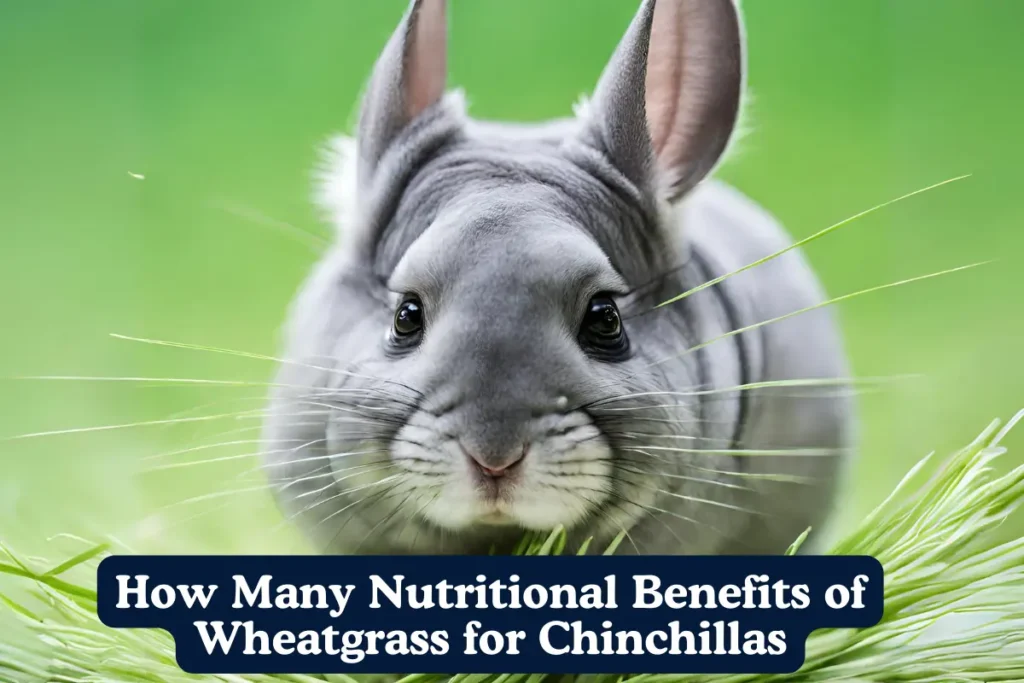
Wheatgrass is a nutrient-rich food that offers several benefits for chinchillas. Packed with vitamins, minerals, and fiber, it can contribute significantly to their overall health.
Vitamins such as A, C, and E present in wheatgrass can support their immune system.
While fiber aids in digestion, preventing issues like gastrointestinal stasis.
How Does Wheatgrass Fit into Chinchillas’ Dietary Requirements?
It’s important to understand how wheatgrass fits into the dietary requirements of chinchillas. Incorporating wheatgrass into their diet alongside their regular food can provide additional nutrients and support their overall well-being. Start by offering small amounts and gradually increase the quantity while monitoring your chinchilla’s response.
If you notice any adverse reactions, discontinue feeding wheatgrass and consult with a veterinarian.
How to Prepare Wheatgrass for Your Chinchilla
Here’s a step-by-step guide on how to prepare wheatgrass for your chinchilla:
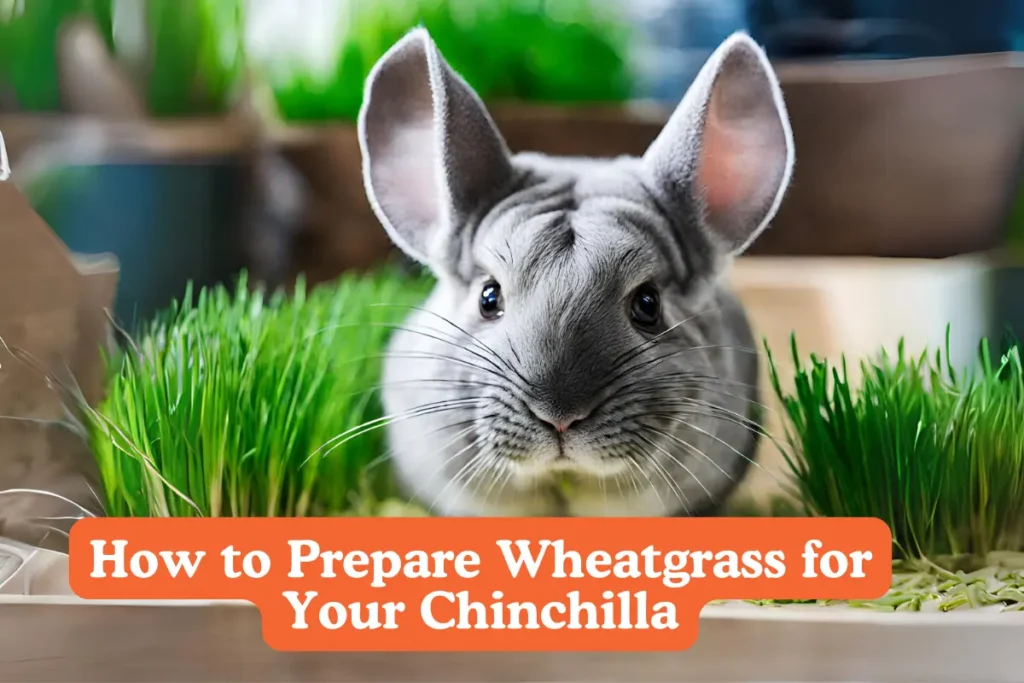
1. Choose Fresh Wheatgrass:
Start by selecting fresh wheatgrass from a reputable source. Look for wheatgrass that appears vibrant green and free from any signs of wilting or discoloration. Fresh wheatgrass ensures your chinchilla gets the maximum nutritional benefits.
2. Wash Thoroughly:
Before feeding it to your chinchilla, wash the wheatgrass thoroughly to remove any dirt, debris, or pesticide residues. Rinse it under cold water and gently pat it dry with a clean towel or paper towel.
3. Cut into Small Pieces:
Chinchillas have small mouths and delicate digestive systems, so it’s important to cut the wheatgrass into small, bite-sized pieces. Use clean scissors to cut the wheatgrass into manageable lengths, making it easier for your chinchilla to chew and digest.
4. Introduce Gradually:
When introducing wheatgrass to your chinchilla diet for the first time, start with a small amount and observe their reaction. Some chinchillas may take to it immediately, while others may need time to adjust. Gradually increase the amount of wheatgrass over several days as your chinchilla becomes accustomed to it.
5. Monitor Any Reactions:
Keep a close eye on your chinchilla after introducing wheatgrass to their diet. Watch for any signs of digestive upset, such as diarrhea or changes in appetite. If you notice any adverse reactions, stop feeding wheatgrass immediately and consult with a veterinarian.
6. Offer as a Treat:
While wheatgrass can be a nutritious addition to your chinchilla’s diet, it should be offered as a treat rather than a staple food. Limit the amount of wheatgrass you feed to prevent overconsumption and maintain a balanced diet for your chinchilla.
7. Provide Fresh Water:
Always provide your chinchilla with fresh, clean water alongside their meals, including when offering wheatgrass. Hydration is essential for your chinchilla’s overall health and helps aid digestion.
People Also Read: Can Chinchilla Eat Celery
How much Potential Risks of Feeding Wheatgrass to Chinchillas
While wheatgrass can offer nutritional benefits to chinchillas, there are also potential risks associated with feeding it to these small mammals. It’s essential to be aware of these risks to ensure the health and well-being of your furry friend. Here are some potential risks:
Digestive Upset: Chinchillas have sensitive digestive systems, and introducing new foods, such as wheatgrass, can sometimes lead to digestive upset. Symptoms may include diarrhea, bloating, or changes in appetite. Monitor your chinchilla closely after introducing wheatgrass and discontinue feeding if you notice any adverse reactions.
Allergic Reactions: Some chinchillas may be allergic to certain foods, including wheatgrass. Allergic reactions can vary from mild to severe and may include itching, swelling, or respiratory issues. If your chinchilla shows signs of an allergic reaction after consuming wheatgrass, stop feeding it immediately and consult with a veterinarian.
Pesticide Residues: If wheatgrass has been treated with pesticides or other chemicals, there is a risk of pesticide residues remaining on the grass. Ingesting these residues can be harmful to your chinchilla’s health. Always choose organic wheatgrass or wash conventionally grown wheatgrass thoroughly before feeding it to your chinchilla.
Overconsumption: While wheatgrass can be a nutritious addition to your chinchilla’s diet, it should be offered in moderation. Overconsumption of wheatgrass can lead to imbalances in your chinchilla’s diet and may cause digestive issues. Limit the amount of wheatgrass you feed and offer it as a treat rather than a staple food.
Choking Hazard: Chinchillas have small mouths, and large pieces of wheatgrass can pose a choking hazard. Always cut wheatgrass into small, bite-sized pieces before offering it to your chinchilla to prevent choking incidents.
Chinchilla Eating Differences: Alfalfa Hay, Arugula, and Wheatgrass
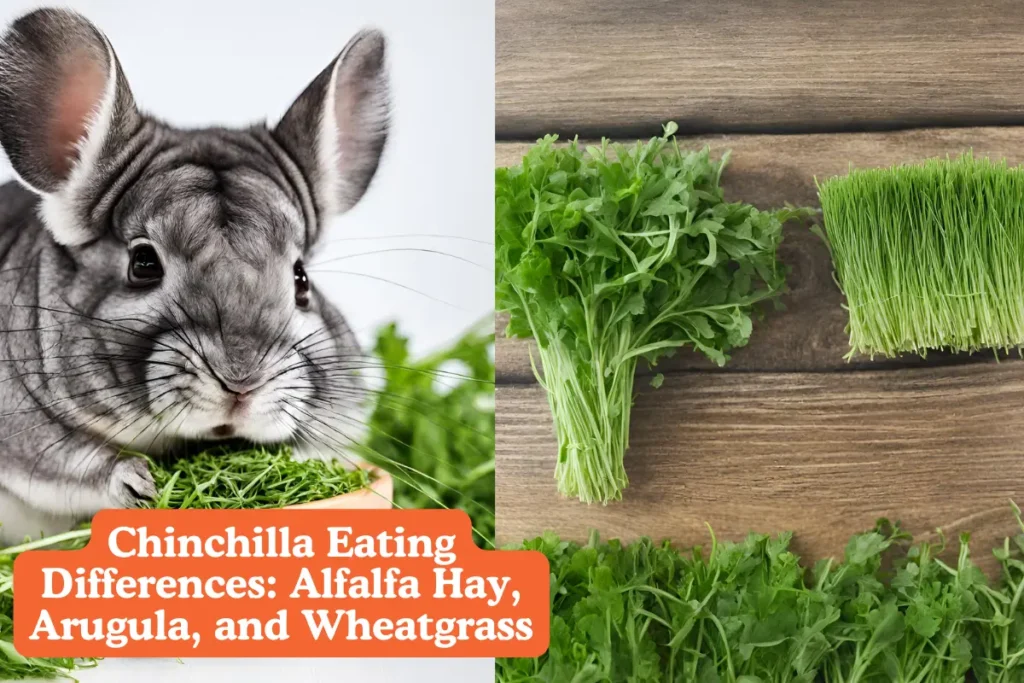
Let’s explore the differences in what chinchillas eat for these three options:
Alfalfa Hay:
Alfalfa hay is a common staple in many chinchilla diets, especially for younger chinchillas, pregnant or nursing females, or chinchillas that need to gain weight. It’s rich in calcium and protein, which are crucial for chinchilla growth and development. However, alfalfa hay should be fed in moderation to adult chinchillas, as excessive calcium intake can lead to urinary tract issues.
When chinchillas eat alfalfa hay, they enjoy its crunchy texture and sweet taste. It’s typically provided as a part of their daily hay ration, alongside other grass hays like timothy hay, to ensure a balanced diet.
Arugula:
Arugula is a leafy green vegetable that can be offered as a fresh treat to chinchillas. It’s low in calories and high in fiber, making it a healthy addition to their diet. Arugula also contains vitamins A, C, and K, which can support your chinchilla’s immune system and overall health.
When chinchillas eat arugula, they enjoy its peppery flavor and crisp texture. It’s best to offer arugula in small amounts, a few times a week, as part of a varied diet that includes other fresh vegetables and greens.
Wheatgrass:
Wheatgrass is another option for chinchilla owners looking to provide a nutritious treat to their pets. It’s packed with vitamins, minerals, and fiber, which can support digestive health and overall well-being in chinchillas. However, wheatgrass should be offered in moderation, as excessive consumption can lead to digestive upset.
When chinchillas eat wheatgrass, they enjoy its tender blades and slightly sweet taste. Chinchilla owners can offer wheatgrass as an occasional treat, alongside their regular diet of hay, pellets, and fresh vegetables.
Which One is The Best Option according to My Experience
Each option offers unique nutritional benefits and considerations:
Alfalfa Hay:
- Best for younger chinchillas, pregnant or nursing females, or chinchillas that need to gain weight due to its higher calcium and protein content.
- Should be fed in moderation to adult chinchillas to avoid excessive calcium intake, which can lead to urinary tract issues.
- Offers essential nutrients for growth and development.
Arugula:
- Best as a fresh treat for adult chinchillas due to its low calorie, high fiber content, and beneficial vitamins.
- Provides vitamins A, C, and K, supporting the immune system and overall health.
- You should offer it in small amounts a few times a week as part of a varied diet.
Wheatgrass:
- Best as an occasional treat for adult chinchillas due to its nutrient-rich profile, including vitamins, minerals, and fiber.
- Supports digestive health and overall well-being.
- Should be offered in moderation to prevent digestive upset.
Can Chinchillas Eat Grass?
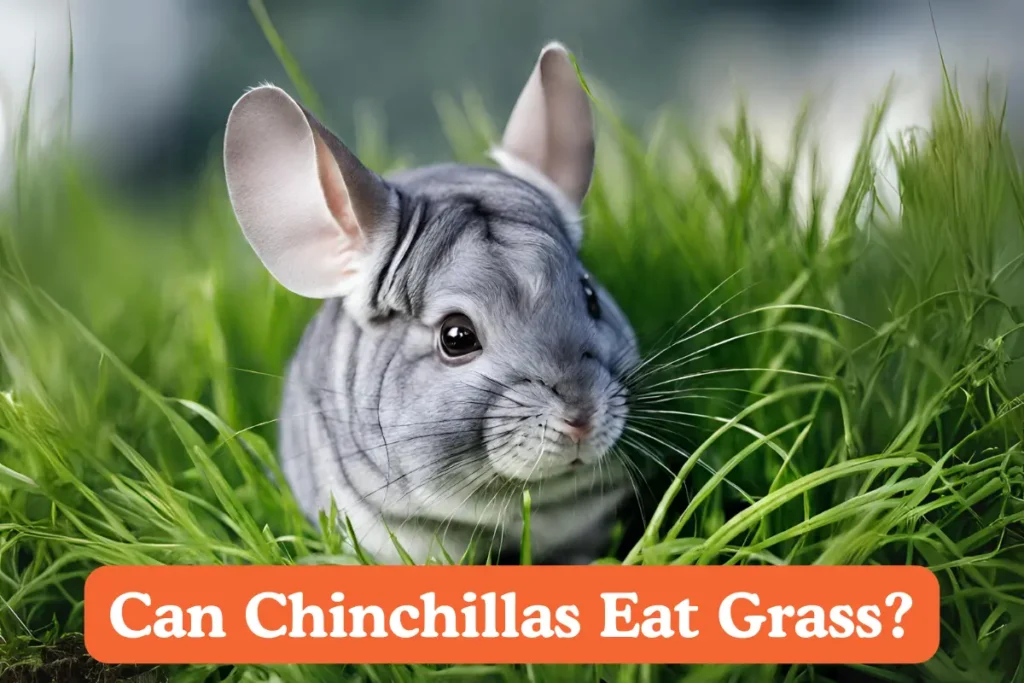
Yes, chinchillas can eat grass. In the wild, chinchillas graze on various grasses as part of their natural diet. However, for offering grass to pet chinchillas, it’s essential to ensure it’s free from pesticides, herbicides, or other harmful chemicals.
You can offer small amounts of fresh, untreated grass as a treat for your chinchilla. Make sure the grass is clean and free from any contaminants that could potentially harm your pet.
Can Chinchillas Eat Greens?
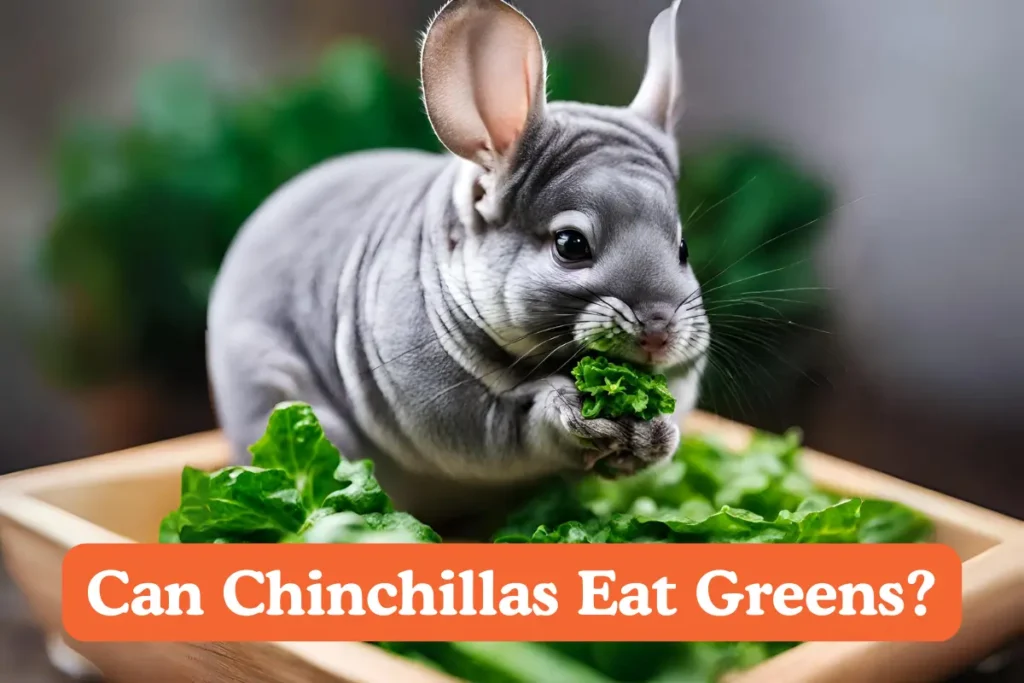
Yes, chinchillas can eat certain types of greens as part of their diet. Leafy greens such as arugula, cilantro, kale, and romaine lettuce can be offered to chinchillas in moderation. These greens are low in calories and high in fiber and essential nutrients, making them a healthy addition to their diet.
However, it’s important to avoid giving chinchillas vegetables that are high in oxalates, such as spinach and parsley, as they can interfere with calcium absorption and lead to health issues. Always introduce greens gradually and monitor your chinchilla’s response to ensure they tolerate them well.

